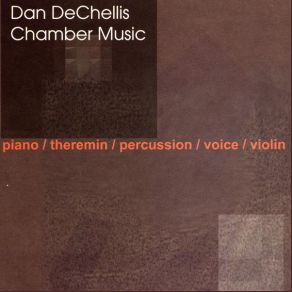Chamber Music
Download links and information about Chamber Music by Dan DeChellis. This album was released in 2000 and it belongs to Jazz genres. It contains 3 tracks with total duration of 51:28 minutes.

|
|
|---|---|
| Artist: | Dan DeChellis |
| Release date: | 2000 |
| Genre: | Jazz |
| Tracks: | 3 |
| Duration: | 51:28 |
| Buy it NOW at: | |
| Buy on iTunes $9.99 | |
Tracks
[Edit]| No. | Title | Length |
|---|---|---|
| 1. | Life on a Square | 19:08 |
| 2. | Deliberate Steps | 21:34 |
| 3. | Conversation Quench | 10:46 |
Details
[Edit]So many great free jazz players — especially pianists — have well-developed classical chops; players like Cecil Taylor, Borah Bergman, and Marilyn Crispell have sensibilities that encompass modern classical techniques. The fact that most of their music is almost wholly improvised distinguishes them from a classical new music virtuoso like Frederic Rzewski. But Rzewski is also a great improviser in a similar vein. And Taylor is a composer of serious renown. Regardless, the fact remains that there's a shared vocabulary between the two aesthetics. Dan DeChellis is another name to add to the list of fine free jazz pianists with a classical orientation. On this aptly titled album, DeChellis successfully creates a music that straddles the new music/free jazz fence. Recorded in a church with an unadorned, classical stereo ambience, DeChellis and company take the chamber music idea and run with it. The music is sparse, spacious, and well considered. DeChellis' non-tonal improvisations do indeed have a through-composed quality. There's no lack of spontaneity, but the Feldman-esque use of space and restrained dynamics give the music a more structured feel than is common to most freely improvised musics. Violinist Katt Hernandez uses space particularly well; she also exploits her instrument's tonal flexibility to good effect. Vocalist Anita DeChellis works closely and well with the violinist during the improvisations, and percussionist Gary Fieldman augments the improvised polyphony with understated elegance. Thereminist James Coleman avoids the fright show clichés of his instrument; his contributions are spare and pithy, quite different from what one might expect. While the record is suffused with classical elements, there's a jazz-like rhythmic impetus in many of the collectively improvised sections. The mixture is enjoyable and begs the question: Why aren't more classical fans hip to this stuff?